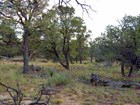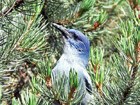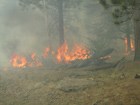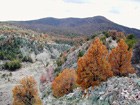Pinyon-juniper woodland is the most common forest type in the American Southwest, covering over 40 million hectares (100 million acres) in 10 states, and extending south into Mexico, and north into Idaho, Oregon, and Wyoming.
-
Article 1: Pinyon-Juniper Woodlands - Introduction & Distribution

Although pinyon-juniper woodlands cover millions of acres, they are among the least-studied North American forest types. Read more
-
Article 2: Pinyon-Juniper Woodlands - Species Composition and Classification

Pinyon-juniper woodlands are remarkably varied, not only in the structure of stands and the species comprising them, but also in the ways they are classified. Read more
-
Article 3: Pinyon-Juniper Woodlands - Ecosystem Drivers, Disturbance Processes and Succession

Expansions and contractions of pinyon-juniper habitat can be driven by factors, or combinations of factors, such as climate, insects, disease and fire frequency. Climate and fire also influence pinyon pine and juniper succession, since certain conditions are better than others for seed germination and seedling establishment. Read more
-
Article 4: Pinyon-Juniper Woodlands - Anthropogenic Use and Post-settlement Stressors

Human beings have a long history of utilizing pinyon-juniper woodlands and the many resources they contain for everything from food and medicine to building materials. After the arrival of Euro-American settlers in the late 1800s, exploitation increased, and many other ecosystem stressors such as fragmentation and invasive plants were introduced. Read more
-
Article 5: Pinyon-Juniper Woodlands - Climate Change and Literature Cited

The effects of climate change, including warming temperatures and increasing droughts, are already evident in pinyon-juniper woodlands across the American Southwest. Read more
